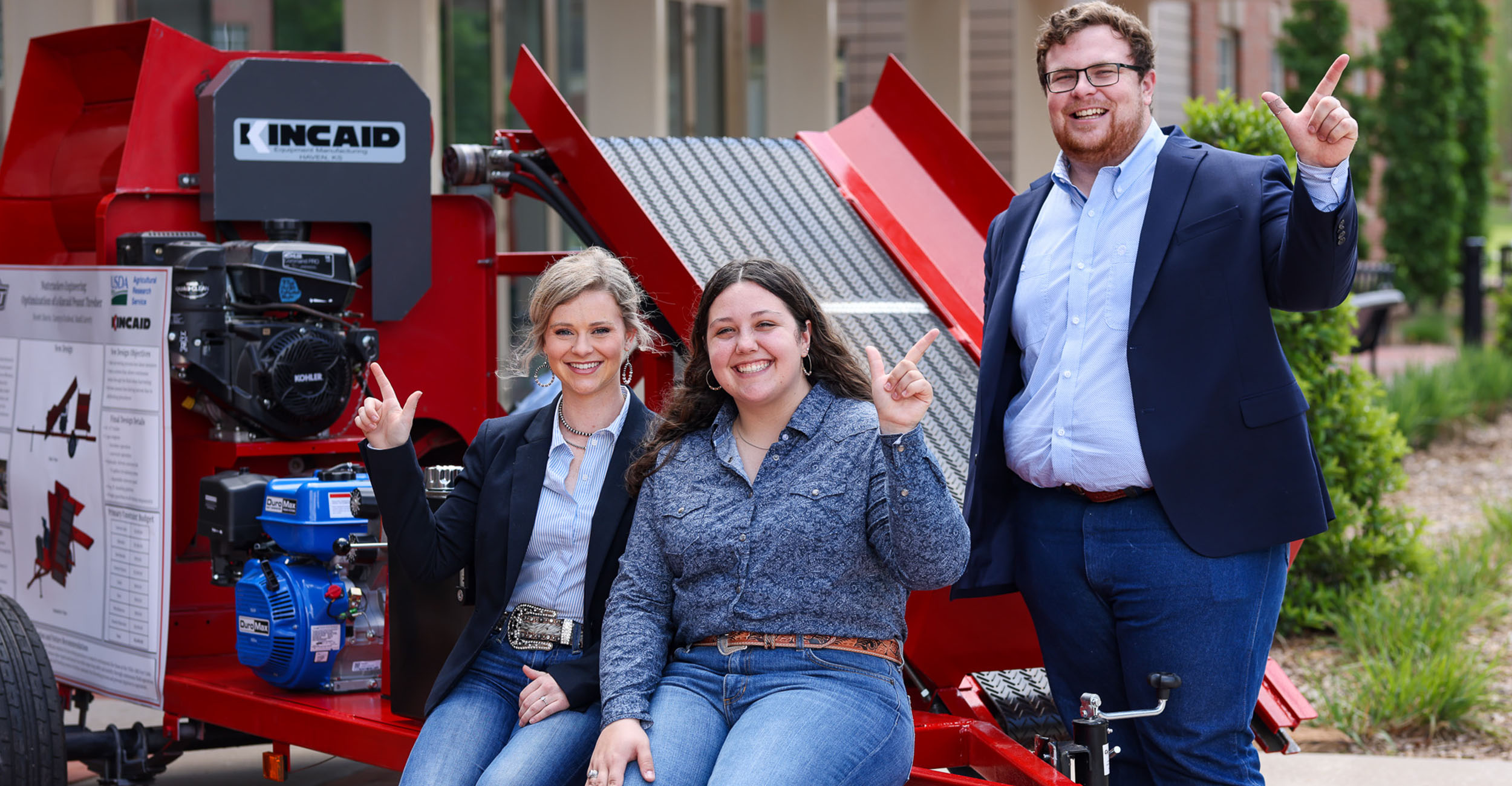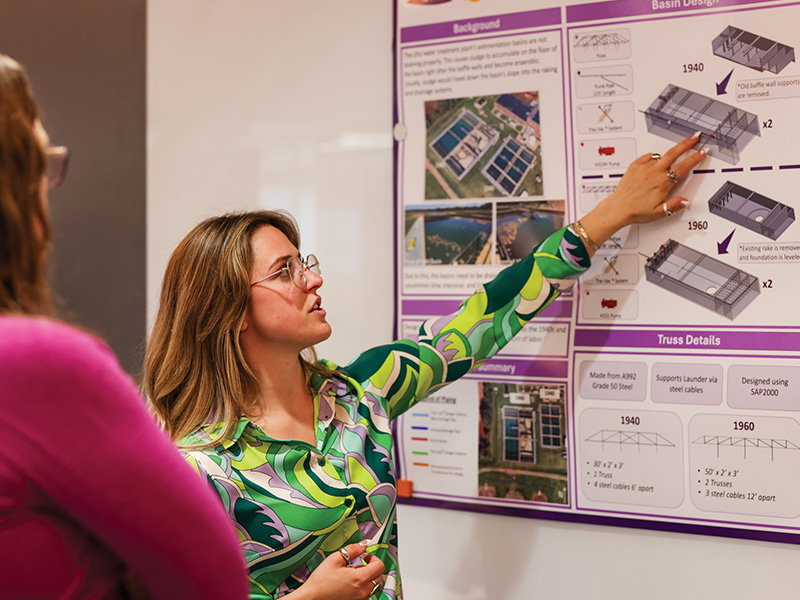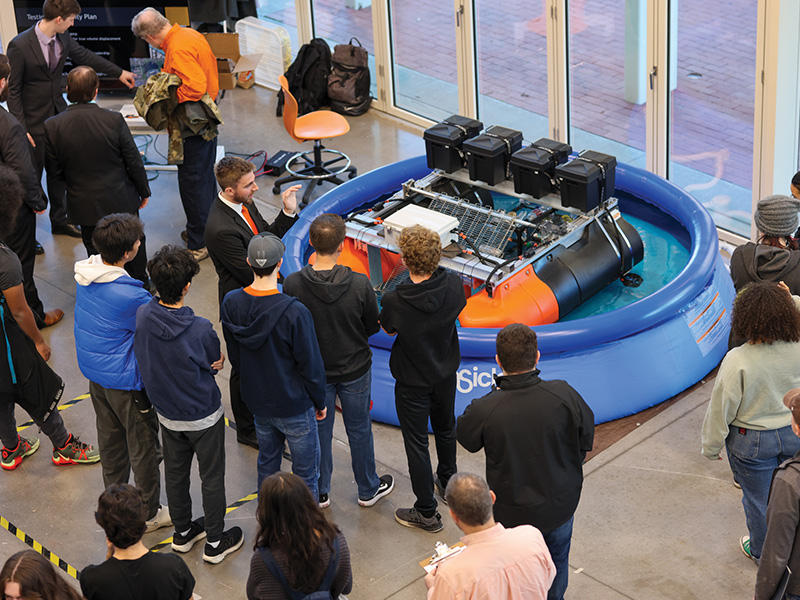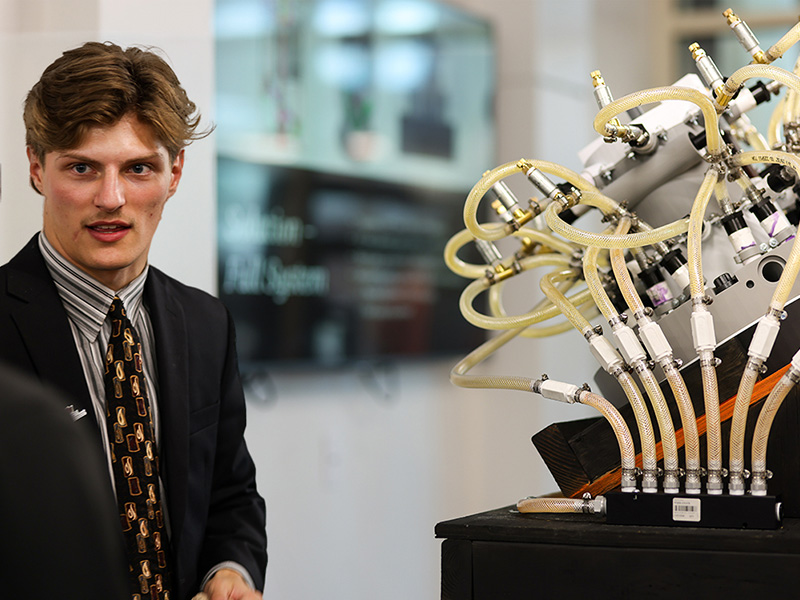
From Classroom to Industry: CEAT's Senior Design Expo
Thursday, October 2, 2025
Media Contact: Kristi Wheeler | Manager, CEAT Marketing and Communications | 405-744-5831 | kristi.wheeler@okstate.edu
College of Engineering, Architecture and Technology students learn in the classroom and with industry during their education at Oklahoma State University.
In addition to internships and hands-on coursework, all CEAT seniors complete a capstone project to be showcased at the Senior Design Expo held each fall and spring.
CEAT capstone projects combine everything students have learned at OSU into one final group project tackling a real-world engineering, architecture or technology challenge. The projects and disciplines involved have increased in size and complexity over the years and were one of the best-kept secrets of the college until the first Senior Design Expo in 2017.
The School of Mechanical and Aerospace Engineering hosted the first expo in fall 2017. It now includes a variety of engineering disciplines, expanding interdisciplinary teamwork, technical knowledge and soft skill development for students across the college.
Teaching Associate Professor Laura Southard has been officially involved with the Senior Design Expo since 2018 as the mechanical engineering capstone design professor and oversees interdisciplinary teams across three CEAT schools. She has witnessed firsthand the expo’s transformation and its impact on students and industry.
Capstone projects are based on needs within companies or communities and brought to Southard or other engineering faculty by several paths. Companies can work with the OSU Foundation to sponsor a project or share ideas that students can work on. They also work with Dr. Robert Taylor, director of CEAT’s New Product Development Center, on different projects that have become senior design projects. Faculty members collaborate with industry throughout the year in other ways, allowing faculty to learn about the needs of a particular company. This creates a need for a senior design team to find a solution for that company.
By working on company-sponsored projects, students see what engineering careers can look like and the type of critical thinking they’ll need on the job. A recent project sponsored by Stillwater company National Standard is a perfect example.
“The student team made a significant contribution by tackling a real challenge our organization was facing,” said Laura Green, National Standard EHS manager. “They conducted substantial research into a variety of potential solutions, demonstrating a thorough understanding of the problem and exploring it from multiple angles.



“What set their work apart was the depth of their analysis — they didn’t just present ideas; they provided well-researched, practical options backed by detailed cost-benefit analyses. Their work helped move the project forward in a meaningful way, and we were impressed by the level of professionalism and insight they brought to the table.”
Student projects rarely come out as planned during the first team meeting, just like in industry. Southard recalled one team that was confident in their computer-aided design drawing of their device until they tried to assemble said device.
“When they went to put it together, the pieces didn’t fit right unless they disassembled the whole thing,” Southard said. “They went back to the drawing board and redesigned the project so that it could be assembled without having to cut anything apart. That kind of learning only happens when you build something.”
Capstone students frequently mention gaining leadership, communication and project management skills, as well as an expanded understanding of engineering beyond their primary discipline. While students benefit, companies do too.
“Sponsoring a capstone project was a meaningful way for us to give back to the community that has supported us for so long,” Green said. “We’ve been actively working to build partnerships with other pillar organizations in the area, and this project provided a great opportunity to strengthen those connections.”
Students provide more to their sponsoring companies beyond the technical contributions to the project.
“The experience has a positive impact on employee morale,” Green said. “Our team members enjoy mentoring and collaborating with students — it gives them a renewed sense of purpose and pride in their work. Engaging with the next generation of professionals creates an energizing environment and strengthens our culture of learning and innovation.”
Capstone projects give students a unique opportunity to do something truly original.
“They’re doing something that nobody at OSU has ever done before,” Southard said. “In many cases, no one in Oklahoma — or even the world — has done before. These are new, innovative solutions. They’re out on the cutting edge, experimenting with new designs, new ideas and new ways to make things work. I appreciate our industry partners and the time they take to enrich the education of our students and connect with our faculty.”
Photos by: Brandy Devous and CEAT Marketing and Communications team
Story by: Erin Portman | IMPACT Magazine
